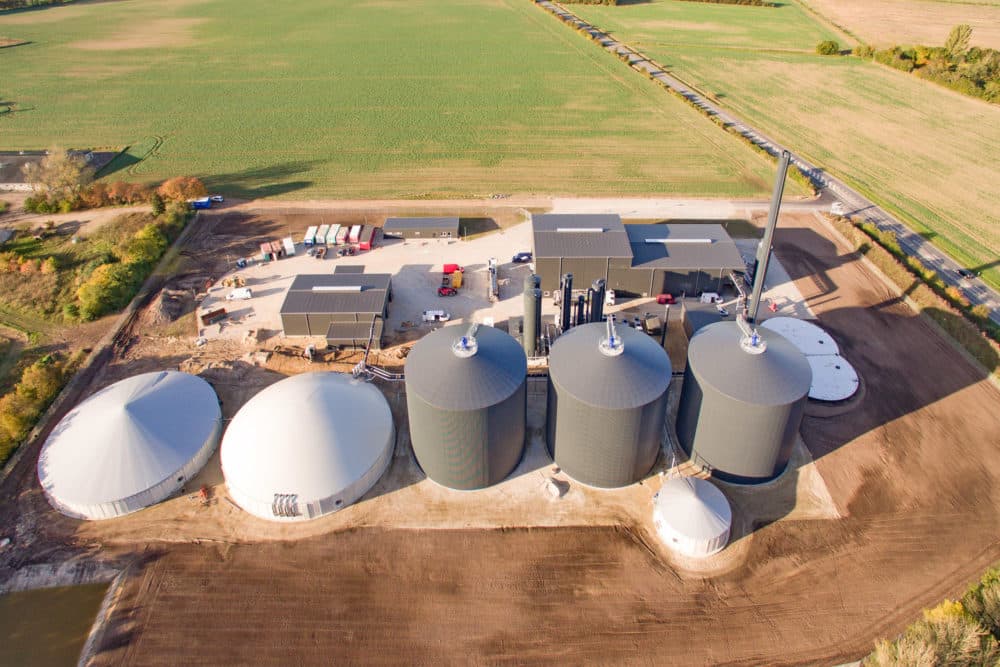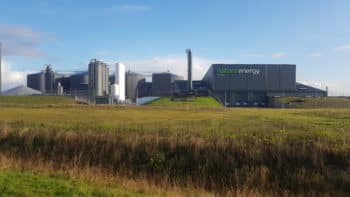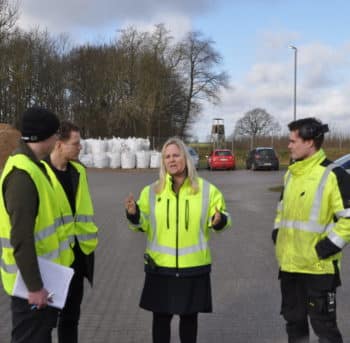
8. Case study 3: Nature Energy
The powerhouse developer of renewable energy says biogas is the final link in the chain that can deliver a green transition
Nature Energy is Denmark’s largest producer of biogas. It owns and operates 10 biogas plants and is in the process of establishing additional plants and expanding existing ones, such as Månsson and Midtfyn (see below for tech spec).

At the Korskro biogas plant the company has started to capture CO2 for use in the food and beverage industry. This further reduces CO2 emissions from the biogas plant improving sustainability and again highlights that biogas is an exemplar of the circular economy in practice, beyond energy, transport fuel and agriculture.
Trine Birgitte Dalsgaard, Chief Business Development Manager with Nature Energy, says, ‘Biogas has every opportunity to be the third leg of the green transition, together with sun and wind, all over the world.’
Denmark is ideally placed to capitalise on biogas. Its gas grid has vast caverns which can store one third of annual consumption. ‘The storage capability of Denmark’s grid is 85,000 times that of Elon Musk’s battery. The Danish grid is on a completely different scale; it is a super way to have backup for wind and solar and that of course needs to be green. It is the golden opportunity for the gas grid.’
Despite uncertainty surrounding ongoing support for the sector beyond 2022, when the current subsidy regime comes to an end, Nature Energy remains bullish with its expansion plans.

‘At the moment it is hard to see where the support for AD should come from due to its value to multiple sectors,’ Trine adds. ‘The versatility of gas means there’s lots of opportunities to support it; gate prices for household food waste; transport displacement; renewable obligations.’
‘Currently we’re working fast in a slow manner,’ she says. ‘We’d love to build more. There is so much more to do. There are two projects we are looking at in south Denmark, on the islands of Lolland and Falster, where there is no gas grid.
‘There are two sugar beet plants, one using heavy fuel (coal) and can’t electrify. They are talking about alternative sources of energy and two options are being explored, either to ship or truck in gas or build a gas grid there. It is super interesting that we are talking about extending the gas grid in Lolland and Falster. The grid would have to use 50% biogas, which is made interesting by the fact that the gas grid could be getting expanded due to renewables.’
The template for future development is hinged on economies of scale – i.e. the centralised model, with the standardisation and modularisation of designs, ‘so we don’t start from scratch every time’, says Trine. ‘Standardisation and modularisation deliver operational excellence so we aim to make sites as identical as possible, although internationally it is not reasonable to expect you can do the same in every geography.’
Another area where the company sees room for improvement is through the adoption of big data. ‘Greater surveillance of operations,’ says Trine. ‘We have only just touched the possibilities of monitoring via SCADA systems. There’s much more to be achieved.’
Being able to take all organic wastes, locally sourced within a 25km radius is the vision. Nature Energy’s CEO Ole Hvelplund envisages a biogas plant every 50km around the world.
Within Denmark the near-term goal of the sector is to reach 50% biomethane in the grid by 2025, and 100% by 2040. ‘Fifty per cent is the tipping point. That is when people will talk about biogas as they talk about wind and solar, recognising wastes as the primary source of gas and not the fossil gas.’
It is then the circular economy as a reality will be cemented.
| Plant | South of Odense, Denmark |
| Commissioned | 2015/6 |
| Owner & Operator | Owned and operated by Nature Energy |
| Feedstock | 350,000 tpa (tonnes per annum). (After expansion this will be 500,000 tonnes.): 75% manures and slurries, 25% industrial waste, and glycerol and beet molasses are fed irregularly to support biology and maintain maximum output. |
| Output | · 1,500 m3/hr biomethane to grid (no propane required). 2,750 m3/hour after expansion.
· 325,000 tpa of natural fertiliser is returned to the land. · 1 on-site manager, 3 operators and 8 full time drivers. · Collects and delivers to and from 47 local farms. |
| Financials (Estimates) | · Estimated plant cost £19,500,000 or DKK 165,000,000
· Estimated plant extension cost £17,241,000 or DKK 145,000,000 · All feedstock is collected from within a 25km radius to make it economically worthwhile. · The best feedstocks are paid for. |
| Process | Feedstock and Digestate
· Nature Energy drivers collect and deliver the feedstock and digestate. · High DM feedstock is fed through the X-Hopper (hammermill and macerator) and mixed with digestate. Glycerol and beet molasses can be fed directly into the fermenters (digesters) from heated storage tanks. · Liquid feedstocks are passed through a heat exchanger with excess heat from the upgrader to increase the substrate temperature to 50℃ prior to entering the fermenters/digesters. · Only the food waste, which is de-packaged and pumped to the site from an adjacent facility, is pasteurised using heat from the gas upgrading system. · The feedstock is fed into the digesters, the original plant had three digesters with a capacity of 8,500m3 each. The expansion has added three further digesters with a capacity of 9,500m3 each. o Each 8,500/9,500 m3 tank receives around 8% DM and has one vertical paddle mixer. · No separation of the digestate is carried out, but before entering the onsite storage tank it passes through the heat exchanger with fresh feedstock. · Whole digestate is delivered back to farmers following feedstock drop-off. Gas and Heat · The plant uses a de-sulphurisation unit (ESOTEC bioscrubber) following the onsite pre-gas upgrading. · The plant has both water (Malmberg) and amine (Ammongas) upgrading. The amine upgrader has been installed as part of the plant’s extension. o Output averages 2,700 m3/hr of raw biogas and 1,500m3/hr of renewable natural gas to grid. · The raw biogas is pressurised and passed through the ‘absorber’ column where CO2 is absorbed. A second ‘desorber’ column separates the CO2 from the amine, which is recirculated. · The gas is all upgraded and injected as no CHP or biogas is used on-site. |
| Interesting Factors | · Nature Energy own and operate the trucks and hire local drivers to reduce OPEX and increase road safety, an important public relations consideration.
· Expansion is currently underway to increase the capacity to 550,000 tpa. o Expansion is separate to the current plant and will only treat organic manures. · It was the 3rd Nature Energy plant to be built in Denmark. |
You must be logged in to view the rest of the content on this page.
To request a login and password, contact us at info@worldbiogasassociation.org
If you have login details, please enter them below.

